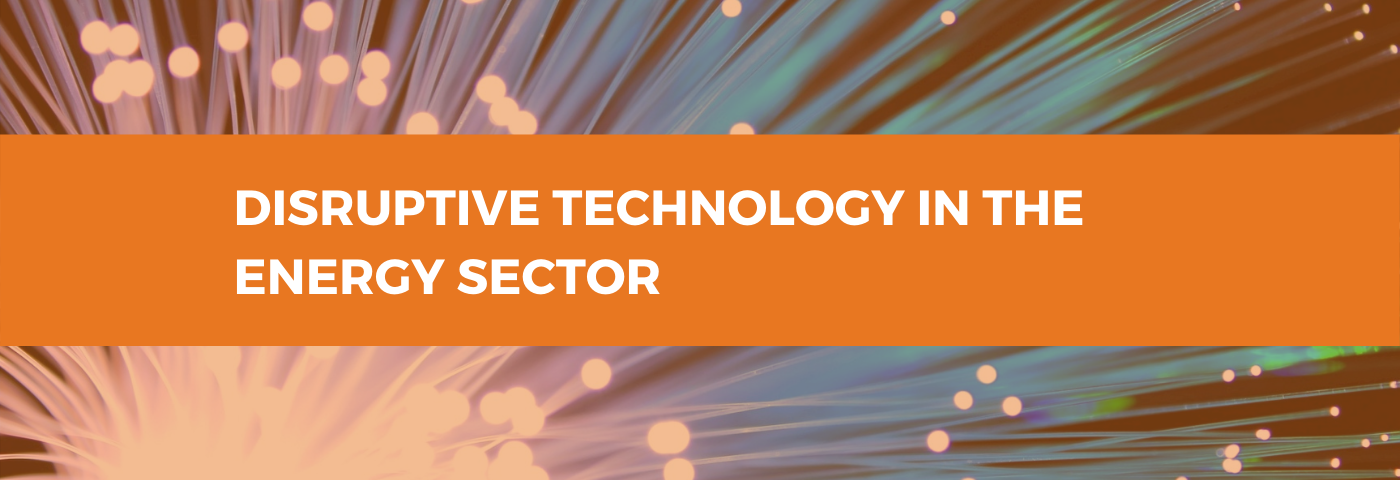This is a guest post from Euan Murray, Legal Director at Shepherd and Wedderburn LLP.
Disruptive technology influences every area of our lives and the energy sector is likely to be one of those most affected in the short to medium term.
What is disruptive technology?
Disruptive technology typically starts out small scale and grows to replace the existing service by delivering it more quickly and cost-effectively. A prime example from the past is the mobile phone, which eliminated the need for telephone boxes for people on the move and provided effective communications coverage for large remote areas that did not previously have fixed-line telecommunication infrastructure.
Disruption in the Energy Sector
We are currently experiencing disruption within the energy sector on a massive scale and I have identified a few potential examples below. Disruptive technology has practical and legal implications for various parties throughout the energy supply chain. It is worth noting that renewable energy and low carbon solutions are, themselves, disruptive technology. This is evident from renewable energy’s profound impact on the conventional generation market. Renewable energy has become one of the primary means of energy generation across the world and decarbonisation is a major priority for governments.
- Artificial Intelligence and robotics are already making an impact on the sector. For example, drones can now be used to survey sites and to monitor or deliver components, cutting costs and improving health and safety. Meanwhile, AI will allow parties to change and optimise the way assets are utilised. However, aside from the practical impact, there are also legal implications to consider. Parties will need to think about the allocation of risk and liability for decisions made by AI when entering into their contracts. Who is responsible when AI makes an incorrect decision that causes loss? And, as digitalisation gathers pace in the energy sector, procuring organisations will need to make sure that they have appropriate access to all the relevant intellectual property rights and copyright data and ensure that it is in a format that can interface with their systems. If not, they may not be able to use the data and their systems effectively. Utilities will also need to consider the impact of proprietary technology on their supply chains and whether tying into to a particular system could create a future compliance risk from a procurement perspective.
- Local generation and distribution – small-scale generation technologies, such as solar energy, are becoming increasingly common and cost-effective thanks to digitalisation. This is likely to encourage local generation and distribution, which could have significant implications for grid infrastructure. Home and business owners are already able to harness this technology to meet their own energy needs and trade the excess. Such a model has material implications for distribution network operators (DNOs) and is likely to trigger a move towards a Distribution System Operator Model. This could have profound consequences for the transmission system and network charging.
- 3D printing and smart and off-site materials – 3D printing has continued to take significant strides forward as the cost of printing metals has fallen, which could yield efficiencies and benefits in terms of parts and components, specifically in the energy construction and SMA sectors. Greater use of smart materials, such as those that can ‘self-heal’, would also have a significant impact. From a legal perspective, parties would need to consider the impact on Service and Maintenance Agreements and defects provisions in all contracts, for example. Taken together with the rise of AI and robotics, such as using drones to service and repair components using smart materials, this could revolutionise the operations and maintenance (O&M) industry. There is also a general move within the construction sector towards off-site construction and greater use of technology in construction. One of the strategic outcomes that the Scottish Futures Trust (SFT) highlighted in its recently published corporate plan for 2019 to 2024 is technology-enabled construction asset management and usage optimisation. Parties will need to consider the legal impact of off-site construction in terms of ownership and transfer of title to such materials and components, and to optimise the payment profile to guard against insolvency issues. In Scotland, an Off-site Materials Agreement may be required to ensure that the paying party has title to the goods, notwithstanding that the components have not been delivered to site and incorporated into the works.
Any commentary on disruptive technology would not be complete without a reference to Blockchain. Blockchain is effectively a digital ledger system where transactions are recorded using decentralised technology, and is the platform on which digital currencies operate. The ledger is public and cannot be altered retrospectively. It has many potential applications. Although itself a relatively new technology, the most interesting thing about blockchain is that it is likely to pave the way itself for a number of new disruptive technologies, which we don’t yet know of.
In summary, the next few years will be an interesting time for organisations the energy sector, which will need to adapt and react as new technologies come online and others evolve. Disruptive technology is a good thing, it can create efficiency and reduce health and safety risks; however, it does generate uncertainty for regulators and investors who will not want to progress or invest in something that could result in a stranded asset or investment. Increased use of technology also goes hand in hand with an increased requirement for cyber security. For those implementing and using new technology, it will be important to ensure that your contracts are robust and flexible enough to anticipate, adapt and react to these issues at the same time.
Euan Murray is a Legal Director in Shepherd and Wedderburn’s infrastructure team


New innovation on hydrogen transfer catalyst reactions to densify H2 through simple electrolysis for dense hydrogen super chemical energy may be the key to a clean energy future.